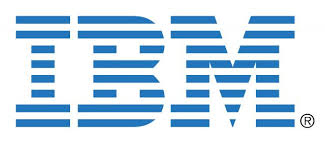The Changing Landscape of IBM Disaster Response
IBM’s Innovation Zone Open Development for Disaster Response (ODDR) Hackathon (ending July 24) is underway! The contest invites coders to use their skills, creativity, and IBM Cloud technologies to help expand the array of tools that IBM can apply in natural disasters and humanitarian crises. In his comments below, Emergency Communication Networks expert Edward Happ offers a primer on the technological underpinnings of effective disaster response, and outlines challenges for the future.
_______________________________
I lead technology for the International Red Cross/Red Crescent as their Global CIO, and was the first CIO for Save the Children in the U.S. and later in the UK. Along the way, I co-founded NetHope – a collaboration of more than 40 international nonprofit technology leaders – and was their Chairman for the organization’s first decade.
The Five Stages of Disaster Response
A year and a half ago, Red Cross/Red Crescent was in the midst of responding to Typhoon Haiyan in The Philippines – a record-breaking storm that left more than 6,200 people dead and affected 16 million people across the country, displacing 4 million of them and damaging more than 1 million homes. Through responding to Haiyan, we learned some important things about technology change. First, mobile networks recovered before emergency systems were set up. Second, many first responders brought – and expected to use – their own technology. And finally, collaboration across relief agencies worked!
During the Nepal earthquake response earlier this year, we saw a new milestone of technology collaboration across the NGO and UN communities. In parallel, we’re also seeing a change in the cycle of disaster response to one that is becoming more centered on citizens, volunteers and beneficiaries. As Red Cross/Red Crescent’s recent World Disasters Report has noted, 95 percent of first responders are local people.
Traditional disaster response goes through five stages, starting with preparedness, and ending with “lessons learned.” The priorities change during the various phases, and are distinct from the priorities of long-term development programs. For emergency response, time and volume are king; for development, cost and quality are the most important.
During disaster response, the efficient movement of goods is critical. However, the typical NGO supply chain is different. Beneficiary tracking, in terms of noting who has received which goods, is a key requirement of funding organizations such as USAID.
In the early hours of a disaster, the crisis needs are first: Is my family okay? Can I get food, water and shelter? Is it possible to communicate (with voice and data)?
Among the most memorable images after the Fukushima, Japan earthquake and tsunami was people lined up to make payphone calls. Survivors need to know that their loved ones are safe. People need information as much as water, food, medicine or shelter. Information can save lives, livelihoods and resources.
With the tremendous digital divide between residents of affluent versus low-income countries – where only six percent typically have access to the internet – it is important for disaster relief technologies to adapt to the situation on the ground. In India, for example, more than twice as many people access mobile information and services using feature phones versus smartphones. With this in mind, below are five challenges that – if solved – could greatly benefit disaster survivors when they are most vulnerable and their situation is most critical:
- Development of a “find the guru” network
- Creation of a simple, feature phone development platform to encourage the advancement of mobile tools for vulnerable populations
- Development of person-to-person mesh networks that work easily for feature phone users (mesh networks being an efficient model where each point in the network relays data for the network)
- Conversion of smartphone applications that are adaptable to use on feature phones
- Building an app store accessible by vulnerable populations
The changing landscape of disaster response is enabling both initial response efforts and long-term development strategies to be more effective than ever. Technology continues to play a key role in enabling affected areas to save lives, recover and rebuild. But it is important to remember that not all populations have access to the same technologies – particularly in the less affluent parts of the world. To reach the world’s most vulnerable in their time of greatest need, we must continue to develop disaster relief technologies that are simple, robust and affordable.
Edward Happ is the Global CIO of the International Federation of Red Cross and Red Crescent, and served as the SME (subject matter expert) on the topic of Emergency Communication Networks for IBM’s Open Development for Disaster Response “hackathon.” You can connect with him via Twitter, Linkedin and via his blog.

